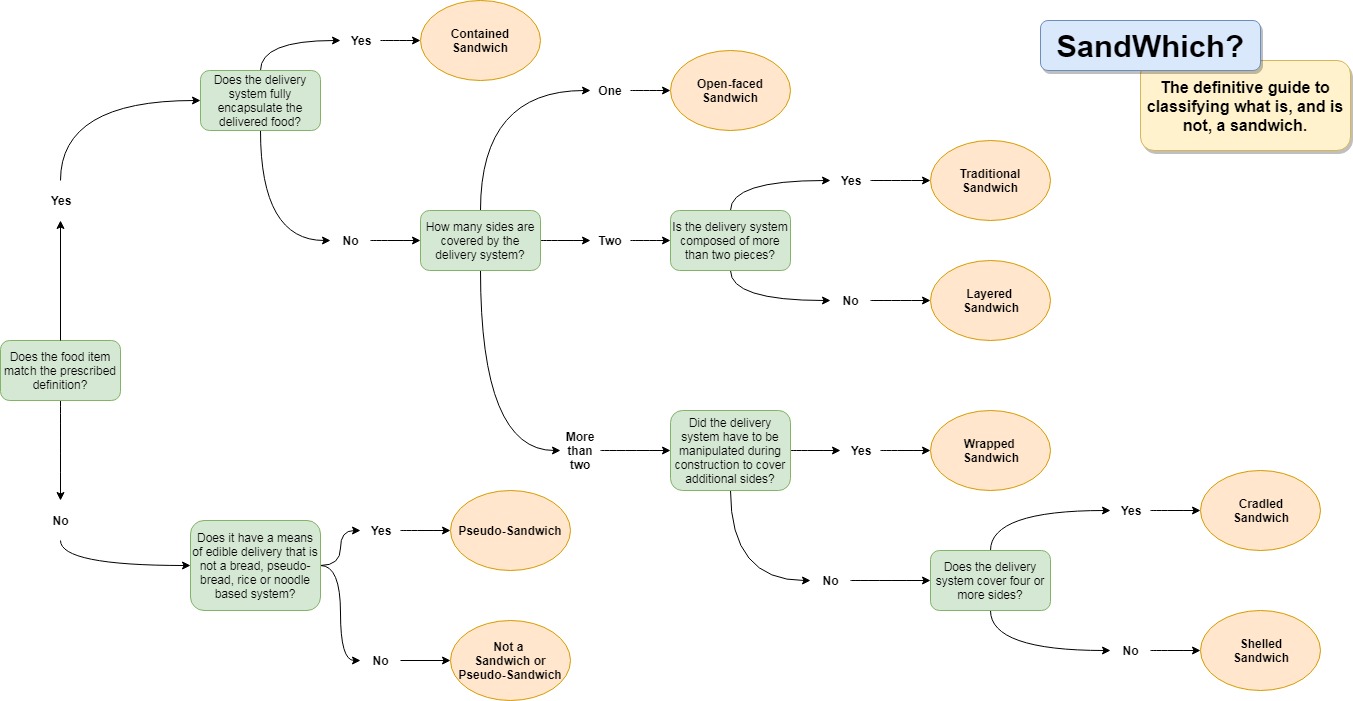By Luke Cross and Jeffrey Waitkevich
The sandwich: a ubiquitous, if unassuming, food.
Most attribute its origin to John Montagu, the fourth Earl of Sandwich, who requested an easily consumable food during his long bouts of gambling; others, to the Jewish sage Hillel the Elder, who combined matzah and lamb for Passover.
The history of the sandwich can be found in libraries and on Wikipedia, but another aspect of it is harder to uncover: what is, and is not, a sandwich?
It’s an insidious question that lies dormant at the peripheries of our knowledge until someone dares to rouse the culinary conversation.
Before you even ask yourself what constitutes a sandwich, find your closest friend and ask them. Regardless of their response, there will eventually come discrepancy in definition between the two of you.
From that discrepancy, debate. Arguments over why your definition is the one true classification are sure to arise.
From debate, distrust. You thought you knew this person, that they were sensible and a friend.
From distrust, disaster. This person is not a friend, but an adherent to false ideology, an ingredient infidel. Their refusal to accept the truth deserves no place in your life.
More so than the sandwiches prevalence, its ability to atomize society and tear apart friend and family is why we need an agreed upon definition.
I’m not claiming to propose that definition, I simply wish to set humanity down the path of culinary peace — to introduce the world to the field of sandwichology.
Now, the first contributions to the study of sandwich may be crude and unrefined, but so are Pythagoras’ geometric discoveries when compared to modern math. Such is the way of uncharted academic territories.
These contributions come in the form of two tools: a succinct definition, able to be broken down into operative terms, through which prospective sandwiches can be placed into a universal classifying system, deemed the “SandWhich?”
The definition is as follows: “Sandwich – A single, entirely edible unit of food constructed with a bread, pseudo-bread, rice or noodle based delivery system holding a separate filling or topping.”
This definition encompasses every sandwich possibility, so an analysis is required.
First, the “unit of food” awaiting classification must be singular. This inclusion is to eliminate the imprecise nature of so-called “sandwich swarms,” such as nachos or cracker based hors d’oeuvres.
This unit must also be entirely edible, phrasing that specifically excludes the corndog, for reasoning that will soon be explained.
The next key segment of the definition is a singular word: “constructed.” In defining the parts of a sandwich, my colleague and I encountered difficulty with fried foods.
They are still a bread based delivery system holding a separate edibly entity, but they lacked that undefinable sandwich je ne sais quoi. As such, we elected for the term constructed, which implies a physical building of the sandwich, as opposed to frying the delivery system onto the sandwich.
Clarifying the “delivery system” poses a unique challenge: most would agree that the container of a sandwich is a carbohydrate, but a line must be drawn within that category. Expounding with the specifics of bread, pseudobread, rice or noodle is lengthy, but necessary — using the broad term carbohydrate would include fruits and the term starch includes bananas.
Pseudo-breads are meant to signify any synthesis of nut or legume to produce a bread-like material. Rice and noodle varieties made the list for the inclusion of uramaki style sushi rolls and the variety of stuffed pasta shells respectively.
Lastly, the “based” modifier following this list denotes that the delivery system must be a majority of any one of the previously listed carbohydrates. A food item delivered between two slices of fruit bread, for instance, is still a sandwich.
Finally, the portion of this definition with the most flexibility is the food being carried by the aforementioned delivery system. So long as it is demonstrably different from the delivery system, the unit of food retains its title of sandwich. This is simply put in place to ward off any “bread sandwich” hooligans.
Given some of the examples offered in the definitive analysis, it should be clear how inclusive the limits of sandwich truly are.
To provide a better estimation of these bounds, the definition is paired with categories found in the “SandWhich?” classification chart.
Category Examples
- Open Faced: Pizza, Nigiri, Eggs Benedict, Bruschetta, Bagel with Cream Cheese
- Contained: Pop-Tarts, Pizza Rolls, Traditional Pies, Ravioli, Dumplings, Empanadas, Calzones, Jelly-FIlled Doughnuts
- Wrapped: Burritos, Wraps, Soft Tacos, Uramaki Rolls
- Shelled: Combos, Cannolis
- Cradled: Hot Dogs, Submarine Sandwiches, Po Boys, Pita, Doner Kebabs, Hard Tacos, Stuffed Shells, Ice Cream Cones, Pumpkin Pies
- Traditional: Quesadillas, Hamburgers, Oreos, PB&Js, Ice Cream Sandwich, Ramen Block Sandwich
- Multi-Layered: Lasagna, Layer Cake, Big Mac
Graphic courtesy of Luke Cross and Jeffrey Waitkevich



